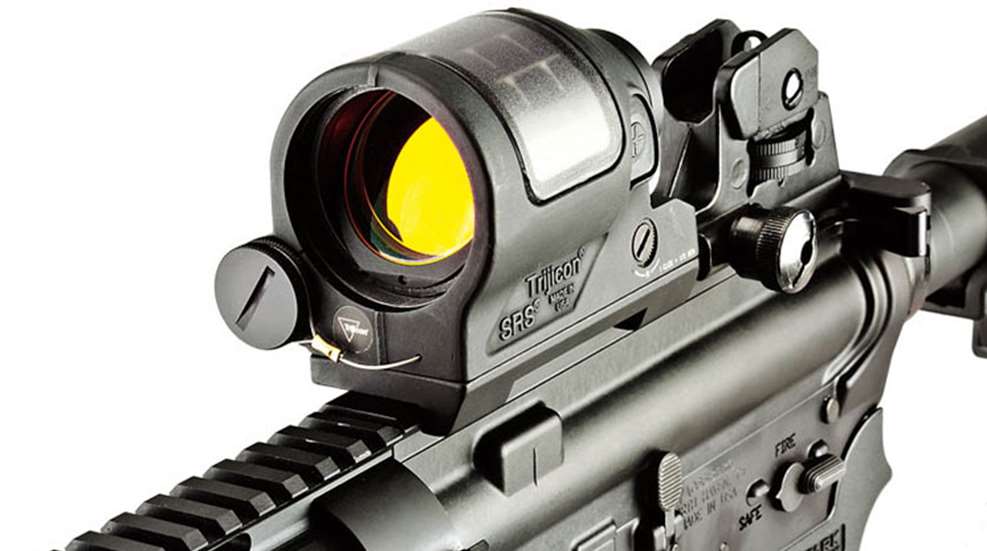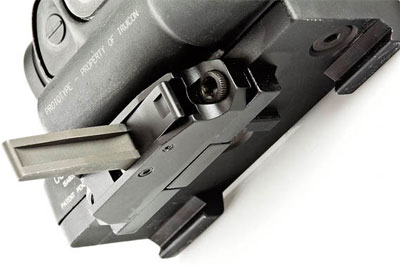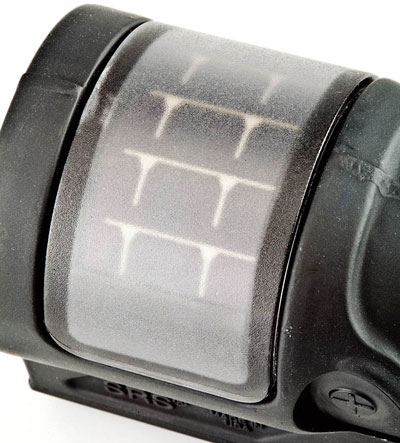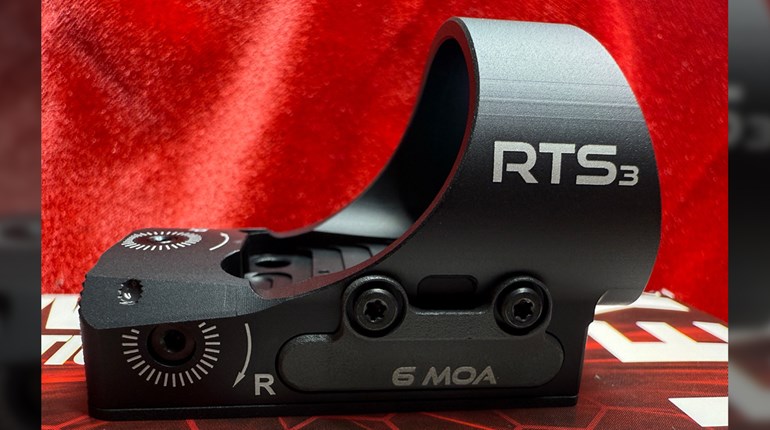
Trijicon's Sealed Reflex Sight (SRS) uses sunlight to power the LED that produces the reflex sight's customary red aiming point. That's right, the SRS is a solar-powered gun sight.
A series of thin-film solar cells somewhat resembling those found on many pocket calculators forms a panel that wraps over the top half of the SRS. When sunlight hits the cells, the semiconductor material sandwiched inside generates a current of electricity that is directed toward the LED. The objective lens of the SRS reflects the red light beam emitted by the LED, giving the user a dot-type reticle to place on the target. That's a rather simple explanation, but understand the solar cells are directly responsible for the illuminated dot. (For a gallery of photos of the SRS, go here.)

Solar, or photovoltaic, cells have powered satellites since the late 1950s. According to the National Renewable Energy Laboratory, the newer thin-film versions produce about 4,000 megawatts of electricity worldwide. Progress in thin-film technology is quickly making solar power more convenient for all sorts of tasks; some big-game guides carry portable solar-cell arrays to charge batteries for satellite phones and other electronics. But until now, the technology has never been applied to optics.
The SRS also uses a single AA battery for power, but in bright daylight conditions, it's nothing more than a backup. Trijicon says that with the solar cells doing the work by day, a lithium AA battery is good for up to three years in the SRS. (Perhaps even longer if the optic were employed only outside on bright days.) The company developed the SRS for environments like those faced by our troops in Iraq and Afghanistan. During daytime in the Middle East, there's usually plenty of sunlight to go around, and the SRS puts it to use. Step inside a dark building or patrol at night, and the battery automatically takes over.
It's a system that represents a big step for Trijicon, a company that has hung its combat helmet on the no-batteries-required ACOG, which uses fiber optics and a tritium-phosphor lamp to illuminate reticles. Compared to the ACOG, the SRS gives the user more intensity options. With fiber optics, intensity is determined by ambient light. You can dim the reticle by covering a portion of the fiber optics, but there is no practical way to make it brighter. Imagine a Soldier or Marine firing from inside a dim building, but targeting insurgents in blazing sunlight outside, and you can see where an issue might arise. Likewise, the glow produced by the ACOG's tritium-phosphor lamp is dictated by the physical properties of tritium and the phosphor. There's no changing it in the field, and in some cases—such as when using night-vision devices (NVDs)—the glow may actually be too bright.

None of this is an issue with the SRS. It has 10 reticle-intensity settings, including three dedicated for use with NVDs and one that Trijicon calls super bright. To make the 1.75-MOA red dot brighter, push the "+" button located near the rear of the SRS on its left side. To make it dimmer, push the "-" button on the right.
The stubby, robust SRS is only 3.75 inches long, but it contains an objective lens that measures a generous 38 mm in diameter. With the SRS mounted 4 inches from your eye (typical on an AR-platform rifle), field of view is 69 feet at 100 yards. The wide diameter of the objective lens, combined with the short distance between it and the 28 mm rear lens, lessens the "tube effect" that comes into play when using some red-dot sights. In other words, it doesn't seem like you're looking through a roll of toilet paper. Very little of the SRS' outer housing, or tube, obstructs the field of view, which helps speed up target acquisition while maintaining situational awareness.
On the range atop a variety of AR-platform rifles, the SRS proved ideal for CQB situations. No magnification, a bright aiming point and a wide field of view helped put shots on close targets quickly. It was also adequate at longer ranges up to 300 yards, especially since the intensity of the red dot could be dialed down to produce a pinpoint reference for aiming. The SRS emerged from a 15-minute dunking in water with no issues, and while testing wasn't as harsh as battlefield conditions, the optic was subject to the bumps and bangs of a three-week period of being repeatedly shuffled from gun safe to office to range. It held zero throughout testing and never failed to produce a crisp, red aiming point.
With the SRS, Trijicon puts a gee-whiz spin on the reflex sight that makes a lot of sense. By providing an illuminated dot that can be tailored to virtually any lighting situation while maximizing battery life through the use of solar power, the SRS could be the future of combat optics.
Manufacturer: Trijicon; (800) 338-0563, www.trijicon.com
Magnification: 1X
Objective Lens Diameter: 38 mm
Reticle: 1.75-MOA, illuminated red dot
Adjustability: 75 MOA windage and elevation in .5-MOA increments
Field of View: 69 feet at 100 yards (with 4 inches of eye relief)
Length: 3.75 inches
Weight: 13.8 ounces with mount and lithium battery
MSRP: To be determined
Don't miss a moment of the action. Subscribe to Shooting Illustrated today!




































